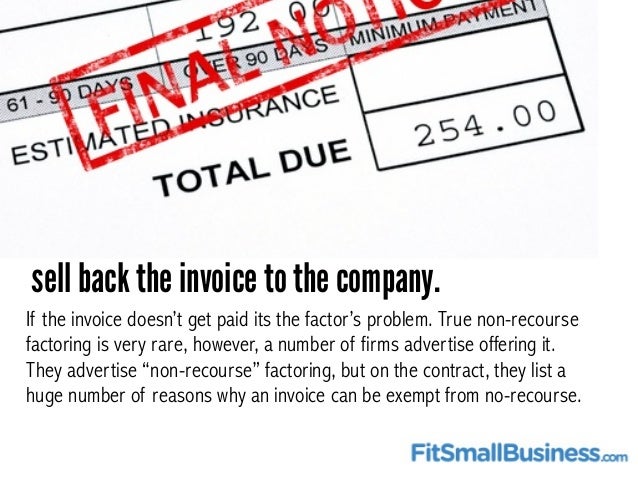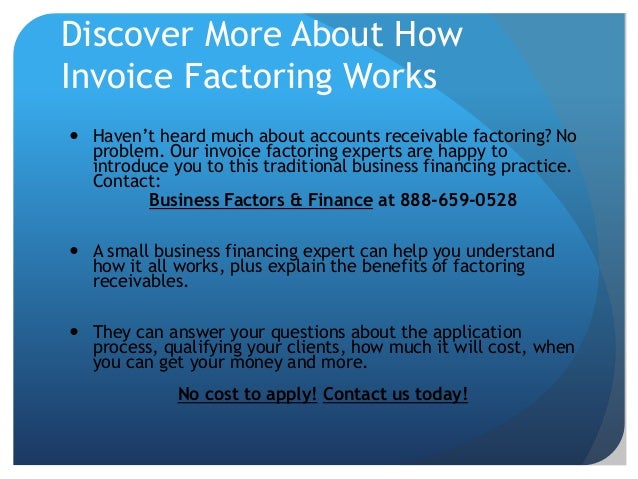

The cookie is set by the GDPR Cookie Consent plugin and is used to store whether or not user has consented to the use of cookies. The cookie is used to store the user consent for the cookies in the category "Performance". This cookie is set by GDPR Cookie Consent plugin. The cookie is used to store the user consent for the cookies in the category "Other. The cookies is used to store the user consent for the cookies in the category "Necessary". The cookie is set by GDPR cookie consent to record the user consent for the cookies in the category "Functional". The cookie is used to store the user consent for the cookies in the category "Analytics". These cookies ensure basic functionalities and security features of the website, anonymously. Necessary cookies are absolutely essential for the website to function properly. So, the factor fees are lower in recourse factoring. On the other hand, recourse factoring takes place when the company guarantees the creditworthiness of the customer and has to pay the advance fee to the factor if the customer fails to pay. Non-recourse factoring is much more expensive for the company as it takes place when the business doesn’t take responsibility for the customer’s payment. There are two types of factoring: non-recourse factoring and recourse factoring. Question: What are the two types of factoring? The average cost of factoring receivables is around 1% to 5% of the total invoice amount, depending on a number of variables such as credit score and the total number of invoices to be paid.

Question: What is the cost of factoring receivables? A business can increase its total number of factors, as long as it maintains a healthy credit score. Yes, factoring receivables is a great idea for those companies that tend to pursue an aggressive growth strategy without taking too many loans. Question: Is factoring receivables a good idea? They have to submit collaterals and make recurring monthly payments, which might affect their cash flow when the sales are low.ĪR factoring is much simpler and transparent compared to taking loans. This, in turn, can boost the revenue of the business, through which businesses can build up a working capital reserve for future growth.īusinesses that tend to take loans often from the bank are likely to be categorized under the ‘ high credit risk’ category. In such a scenario, accounts receivable factoring eliminates the need to wait for the conversion of invoices into cash.įactoring is not a loan and therefore it won’t affect a business’s credit ratings and the interest rates at which they can borrow money, thereby helping businesses have cash in hand. The speed of cash flow can get hampered when the revenue of the business is tied up in unpaid receivables, affecting the payroll and overhead costs of the company.

Factoring comes into play only when you require immediate working capital.Ĭash flow plays an important role in the success of a business. It also does not impact your business’s credit rating. People sometimes confuse accounts receivable factoring with “lending solutions.” AR factoring does not require any collateral. Apart from this, there are a number of other advantages of accounts receivable factoring to business owners. People often see accounts receivable factoring as an alternative to traditional loans. Step 4: Completion of final payment to the sellerĪfter the payment has been received by the factoring company, the factor clears the remaining amount of payment to your business, which is 1%-3% of the total invoice value. Over the next 30 to 90 days, the accounts receivable factoring company collects the payment from the customer, depending on the payment terms. It is mostly 8–10% of the total amount which the factoring company keeps as a deposit.

The factoring company holds the remaining percentage of the amount as security money until the invoice is paid by the lender. In most cases, the company advances 80 to 95 percent of the factored amount on the day of invoice submission itself.įor example, if the factoring company buys $10,000 worth of receivables and agrees to advance 90% of the total payment, then you will receive $9,000. Step 1: Submission of invoiceĪfter you submit all the invoices to the factoring company, they verify the details and make sure the invoice qualifies for factoring. To help you understand how accounts receivable factoring works, let’s look at a step-by-step break-up of the process.


 0 kommentar(er)
0 kommentar(er)
